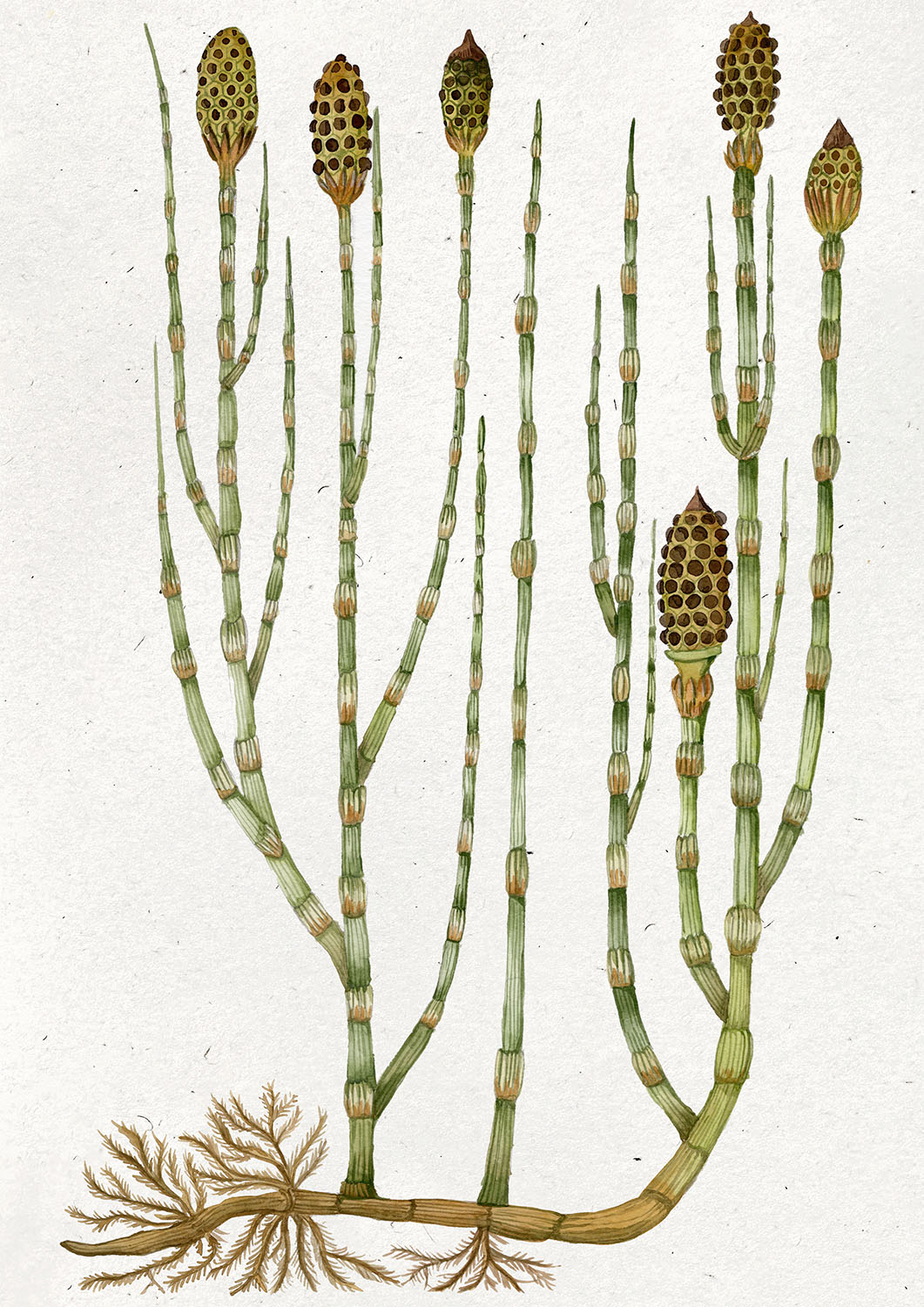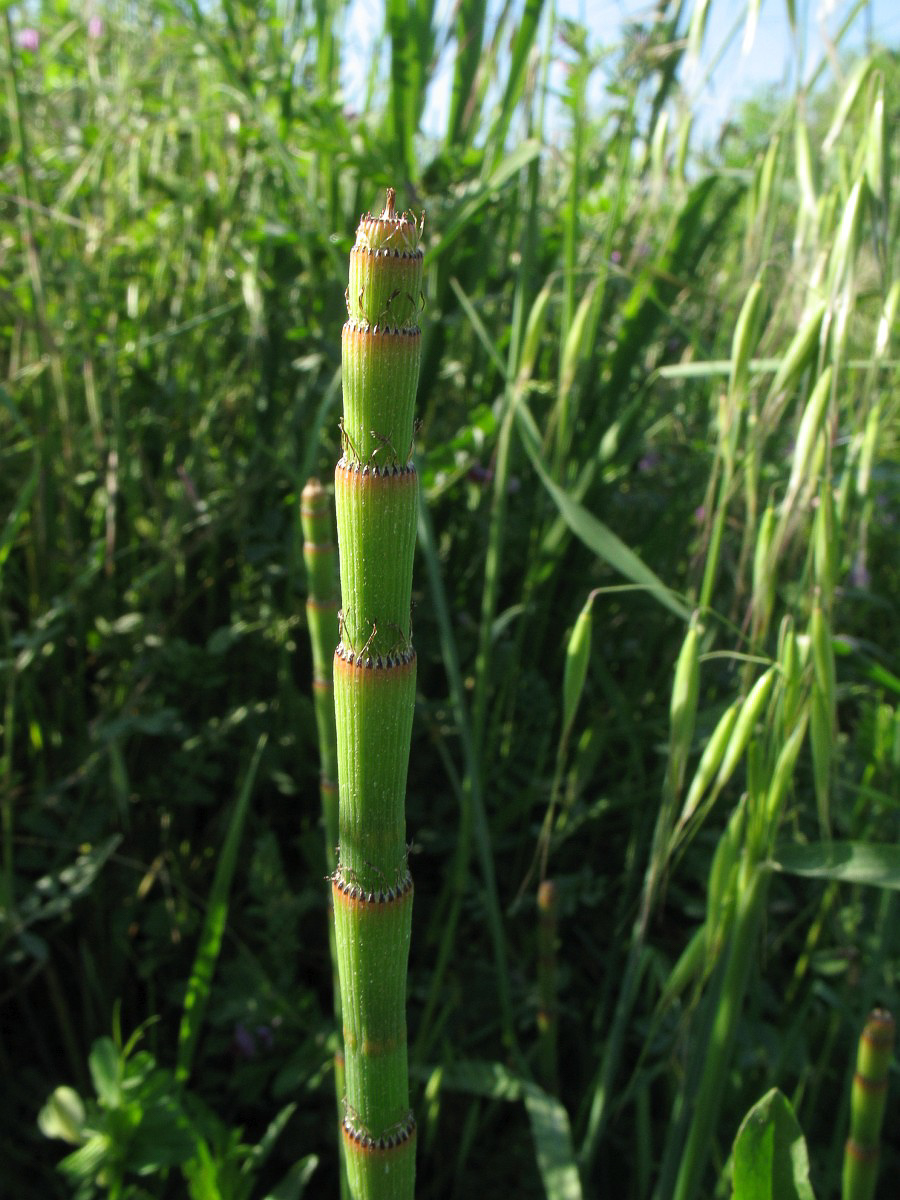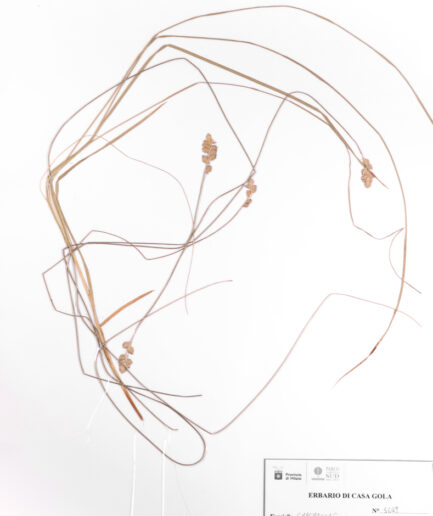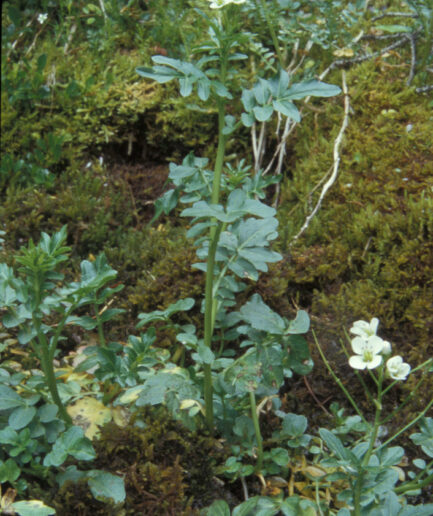Rough Horsetail
Scientific Name: Equisetum hyemale L.
Family: Equisetaceae
MORPHOLOGY
Habit and Size: Perennial pteridophyte with a black rhizome, long creeping.
Stem: Homomorphic stems (fertile and sterile similar), overwintering, dark green, up to 150 cm tall and 4-6 mm in Ø, erect, rigid, and robust, with shallow grooves (10-30) and a central cavity of about 2/3 of the diameter. The stems are generally simple, never branched (or slightly branched if the stem has been broken) and very rough due to the abundance of siliceous papillae on the ribs, and with often swollen internodes; short, cylindrical sheaths, 1-1.5 cm long, appressed to the stems, initially green, then whitish, with 10-25(30) early deciduous teeth and crenulate edges, circled in black at the base and apex. Terminal strobili, ovoid, brown, up to 15 mm long, mucronate at the apex, and shortly pedunculate.
Leaves: They do not have leaves.
Flowers: They do not have flowers.
Fruits and Seeds: Spherical spores produced throughout the year.
DISTRIBUTION AND HABITAT
It grows throughout Italy except for the major islands, Calabria, Basilicata, Puglia, and Molise. It grows in humid forests, marshy areas, riverbanks, alluvial meadows, lake sands from 0 to 2500 m.
INTERESTING FACTS
The stems of this species were once used for their abrasive property to clean wood and copper. In the Netherlands, large quantities of winter horsetail were planted for the consolidation of dikes, aimed at retaining the soil with the dense intertwining of rhizomes and roots.
Photo: Provided under a free license by Saxifraga and Ed Stikvoort, Jan van der Straaten, Rutger Barendse.























